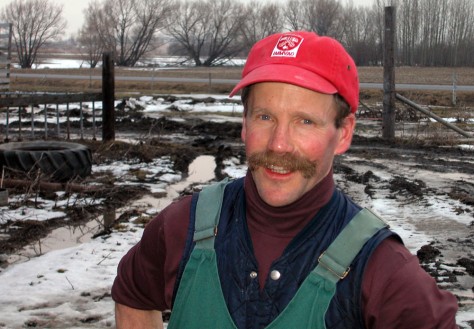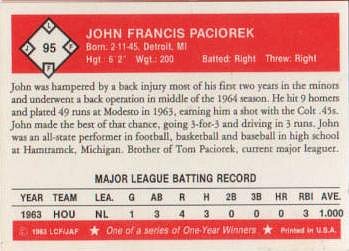I’m not sure I remember a more satisfying moment from my
childhood than the movie moment when Charlie Bucket unwrapped the Golden Ticket
in Willy Wonka and the Chocolate Factory.
“Greetings to you, the lucky finder of
this Golden Ticket from Mr. Willy Wonka… In your wildest dreams you could not
imagine the marvelous surprises that await you!”
So you can imagine
the thrill a generation later when I wrote a magazine article about Peter
Ostrum, the actor who played Charlie.
His rise to fame
was remarkable. Here was a kid from Ohio who was performing at the
Cleveland Playhouse children’s theater in 1970 when he was discovered by agents
casting the film. They took some Polaroid pictures, tape-recorded him reading
from some lines, called him in for a screen test a couple of months later… and
suddenly 12-year-old Pete was Charlie Bucket, traveling overseas for the first
time, to Munich, and acting opposite the likes of Gene Wilder and Jack
Albertson.
He was basically playing himself—down to earth and able to
be awed without losing a sense of self. But unlike Charlie, who gratefully
inherited Wonka’s factory, Ostrum returned to Cleveland with the suspicion that
filmmaking wasn’t quite his (edible) cup of tea. He even turned down producer
David Wolper’s offer of a three-picture deal. “I enjoyed making the movie,” he
told me, “but at that point, did I want to be a film actor for the rest of my
life? I guess I didn’t.”
Instead, he found an entirely different calling. Shortly
after he completed the film, his family acquired a horse. When a veterinarian
arrived at the stables one day, Ostrum watched him work and had a life-changing
epiphany. Three decades after his single film credit, Peter Ostrum has a Doctor
of Veterinary Medicine degree on the wall of his practice in upstate Lowville,
NY, instead of lickable wallpaper. He is surrounded not by Oompa Loompas, but
by a handful of dogs and cats.
No, he doesn’t actually own one of the dozen or so original
Golden Tickets, said to be a valuable collector’s item nowadays—just a
clapstick slate and a couple of Wonka Bars. But Dr. Peter Ostrum is so content
in his choices that perhaps the final lines of his sole movie appearance were
prescient after all:
“But, Charlie, don't forget what happened to the man who
suddenly got everything he always wanted."
"What happened?"
"He lived happily ever after."
So in the only movie he ever made, Ostrum had a starring
role, grabbed a Golden Ticket, piloted a Great Glass Elevator, inherited a candy
conglomerate and cemented his place in film history. Might he be the ultimate
one-hit wonder?
Malcolm Gladwell would plotz. The most talked-about and
compelling part about Gladwell’s outstanding book Outliers was his decision to repeatedly trumpet the “10,000-hour
rule”—the notion that the key to success in almost any field is, to a large extent,
a matter of simply practicing a specific task for at least 10,000 hours. The
notion stems from the widespread belief, certainly generally valid, that achievement
is all about perseverance. Practice makes perfect. Never say die. Try, try
again. If at first you don’t succeed…
But sometimes, at first, you do succeed. Wildly. Like Peter
Ostrum, a handful of folks have tried something once, achieved near perfection,
then left it at that. They batted 1.000 for eternity.
A fellow named John Paciorek did so literally. He appeared
in exactly one major league baseball game—for the old Houston Cold ‘45s on the
last day of the 1963 season. In five times at bat, he singled three times,
walked twice, scored four runs, and recorded three runs batted in. He also made
a couple of nice running catches in the outfield. Paciorek was anointed
Houston’s star of the future, but a series of injuries that began in the
offseason derailed his career. That remarkable first game would prove to be the
only big league game he ever played.
There are echoes of “Moonlight” Graham in Field of Dreams: “Back then I thought,
Well, there will be other days. I didn’t realize that that was the only day.”
Except Graham didn’t get to bat at all.
And sure, it’s tempting to call Paciorek the can’t-miss-kid
who missed, but he did make it after all, right? And in that one game, he was
simply flawless—he will forever have, literally, a perfect batting average.
But what about music, you ask? Isn’t that the source of the
term one-hit wonder? Sure, there are scores of songs to choose from—hit singles
from solo acts or band that never produced another. You know, like “Tainted
Love” by Soft Cell, or “Come on Eileen”
by Dexys Midnight Runners, or “Spirit in the Sky” by Norman Greenbaum.
However, those weren’t the only songs by those artists—just the most successful
ones.
Ah, but one particular can’t-get-it-out-of-my-head tune was
recorded by a specific group of little-known musicians who joined for a single
recording session. Paul Leka, Gary DeCarlo, and Dale Frashuer couldn’t come up
with suitable lyrics, so they substituted words like “hey hey” and “na na.”
They were said to be so embarrassed by the song that they attributed it to a
fictional band called Steam. The result: “Na Na Hey Hey Kiss Him Goodbye”
became a number one single on the Billboard Top 100 in late 1969. To this day,
it remains a sports stadium crowd-chant staple.
Nearly everybody knows the one song they recorded in a
single session. That’s a one-hit wonder.
Okay, how about filmmakers? Well, if you’re a fan of zombie
films, you surely have seen Night of the
Living Dead, the paragon of pasty animated corpse flicks. But director
George Romero once said his film was directly inspired by another, a 1962
black-and-white called Carnival of Souls,
which was a micro-budget horror movie filmed by a guy named Herk Harvey in his
Kansas hometown. It was the only film he ever completed before returning to a
quiet life as a Kansas businessman, but it is referenced reverently by modern
horror filmmakers.
If we’re talking reverence, however, let’s talk literature.
Let’s start with A
Confederacy of Dunces, the unforgettable romp of fat and flatulent Ignatius
J. Reilly. John Kennedy Toole wrote it, couldn’t snag a publisher, and
committed suicide in 1969 at age 31. His book was published posthumously and, twelve
years after his death, won the Pulitzer Prize. However, not many folks know
that it wasn’t actually his first novel. He wrote The Neon Bible at the age of 16 in 1954 and couldn’t get that
published either. It was eventually released eight years after Confederacy hit
it big.
While a whole bunch of people consider Confederacy to be one of their favorite books, consensus suggests
that To Kill a Mockingbird is THE most-loved
piece of literature ever produced. Nearly every student has read it. There are
nearly 30 million copies in print. In 1999, a Library Journal poll voted it Best Novel of the Century. I’m pretty
sure I agree. And the movie was great, too.
Lee published the Pulitzer-winning book in 1960, then never published
another novel for 55 years, although she did help her childhood pal Truman
Capote in his research for In Cold Blood—and
how’s that for another classic? “I have said what I wanted to say, and I will
not say it again,” she once explained. Which is one reason publication of Go Set a Watchman was so… disappointing.
Well, that and the fact that Atticus Finch turned out to be less than perfect.
But while I will be forever grateful to Harper Lee as an author’s
inspiration, she no longer qualifies as a one-hit wonder. And I genuinely liked
Peter Ostrum, but he’s not number one either. Nor is John Paciorek, even though
I’m a baseball history nut.
No, I think I most love the story of John Daniels.
Daniels is believed to have snapped one photograph in his
life. He did it on December 17, 1903, on a cold and windy day on the sandy
shores of the Atlantic Ocean. And he made it count. Daniel’s photograph is
depicted on the North Carolina quarter. It has been blown up to a
10-foot-by-10-foot size and paraded through the state. It has been recreated in
statues of bronze at almost the very location that it occurred. It is simply
one of the most significant snapshots in human history.
On that day in 1903, Daniels was among a handful of people
keeping busy at a particularly wind-ravaged spot in North Carolina’s Outer
Banks, a placed called Kill Devil Hills. The busiest two people were brothers
Orville and Wilbur Wright. Daniels, a rescue worker from the local lifesaving
station, was merely helping out where he could.
The story of the Wright brothers is the tale of the right
men coming along at the right time. Daniels happened to be in the right place.
After years of preparation, the Wrights pointed their aircraft into the wind.
Orville set up a camera on a tripod, aiming it at a point he hoped the machine
would reach when it left its take-off rail. He instructed Daniels to press the
shutter if the aircraft actually left the ground. After about 45 feet, the
flying machine lifted into the air, and 120 feet later it touched the earth
again.
Daniels later claimed that he was so excited at the flight’s
success that he thought he had forgotten to squeeze the bulb. But the photo was
perfect, capturing the craft two feet off the ground, with Orville at the
controls and Wilbur running alongside. It was the very moment that changed the
world.
The photograph has since been analyzed endlessly—from the
location of footprints in the sand to the speed of the propellers—but it was
actually the lesser of Daniels’s major thrills that day. After the Wright’s
fourth successful flight, a gust of wind caught the Flyer, causing it—and
Daniels, who had been holding on—to cartwheel across the beach. The Flyer was
damaged and never flew again. Until 1937, when he finally took a flight to
Cleveland, the same could have been said of Daniels, who explained, “I’ve had
all the thrill I ever want in an airplane.”
Daniels spent the rest of his years in relative obscurity on
the Carolina coast, and he may have been most proud not of his seminal
photograph but of his pioneering bruises as the first airplane casualty. In
fact, Orville Wright, who died within 24 hours of Daniels in 1948, used to joke
that his friend “rode further in the plane than either of the inventors.” Of
course, there were no photographs to prove it.







No comments:
Post a Comment